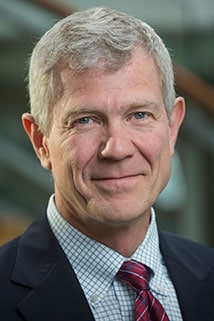Screening patients with newly diagnosed cancer to identify hepatitis B and C infections before starting treatment may be warranted to enhance clinical outcomes. Universal screening for HIV, however, may not be warranted.
Throughout the United States, universal screening of patients with newly diagnosed cancer for hepatitis B virus (HBV), hepatitis C virus (HCV), and HIV is not routine. Experts disagree about whether universal screening of new patients with cancer for HBV, HCV, and HIV should be recommended, but the case can be made to do so because these undiagnosed chronic infections pose transmission risks to others. Not screening for these viruses can increase risks for viral reactivation during treatment. Ultimately, this means a missed opportunity to reduce future morbidity associated with these infections because effective treatments are available. “This may become a critical issue as more patients with cancer receive treatment with therapies that alter the immune system,” says Scott D. Ramsey, MD, PhD.
On the other hand, studies indicate that annually screening all patients with newly diagnosed cancer for HBV, HCV, and HIV are likely to increase cancer care costs with uncertain impact on patient outcomes. Other detriments to universal screening include potentially harmful delays in cancer treatment or switching to less toxic cancer treatments with uncertain effectiveness. A key driver in the debate for universal screening is that the prevalence of HBV, HCV, and HIV among patients with newly diagnosed cancer is largely unknown. Dr. Ramsey adds that most oncology practices do not know the extent to which patients with newly diagnosed cancer are aware of their viral status.
Taking a Closer Look
For a study published in JAMA Oncology, Dr. Ramsey and colleagues sought to estimate the prevalence of HBV, HCV, and HIV infection among people with newly diagnosed cancer. For the study, more than 3,000 patients with newly diagnosed cancer at 18 academic or community oncology institutions were screened for the viruses unless they presented documentation that they had knowledge of a prior infection. A new diagnosis was defined as being identified within 120 days of a cancer diagnosis. The analysis included patients who had previous knowledge of infection and those with unknown viral status.
“Our study found that the infection rate for previous HBV infection was 6.5% and 0.6% for chronic HBV,” says Dr. Ramsey. “A 2.4% infection rate for HCV and a 1.1% infection rate for HIV was also observed [Figure].” Importantly, 87.3% of previous patients with evidence of past or current HBV (including 42.1% of those with chronic HBV), 31.0% of people with HCV, and 5.9% of individuals with HIV did not know their viral status when they were registered for the study. Furthermore, among patients with infections, 21.1% with chronic HBV, 32.4% with HCV, and 20.6% with HIV had no identifiable risk factors.
The analysis also showed that cancers of the liver, gastrointestinal tract other than liver or colorectal, head and neck, lung, and prostate appeared to correlate with the highest prevalence of HBV, HCV, or HIV infection. In addition, only 8.0% of patients with any viral infection changed cancer treatments because they had a viral-positive status.
Assessing the Implications
“Considering a large number of patients with cancer had undiagnosed chronic infections, we believe oncology practices should give further consideration to universal testing of patients with newly diagnosed cancer for HBV and HCV infections,” Dr. Ramsey says. “Although the feasibility and cost-effectiveness of risk factor screening in oncology practices is unknown, the potential gains from HBV and HCV screenings could be enhanced by examining risk factors before testing.” The study group noted that the yield of universal HIV testing among patients with newly diagnosed cancer is likely to be low and that universal one-time screening for HIV is recommended in primary care. Therefore, more research is needed before universal screening for HIV in patients with newly diagnosed cancer can be recommended.
Dr. Ramsey notes that his research team is currently performing studies to determine if universal screening of these infections is cost-effective. “We’re also continuing to collect follow-up data on participants of the current study,” he says. “Our hope is we’ll learn more about the effects of these infections on patients with newly diagnosed cancer.”


 PWeekly
PWeekly